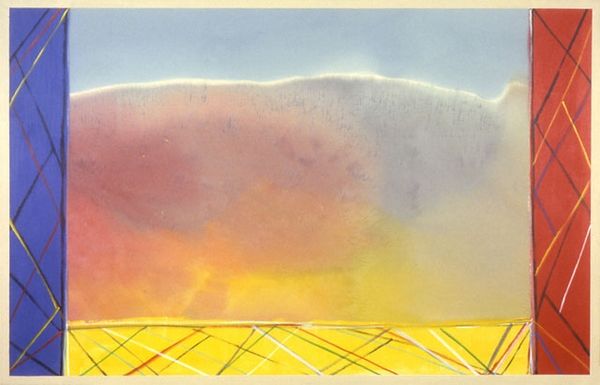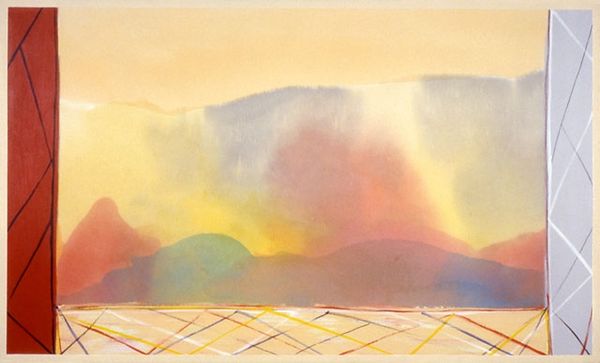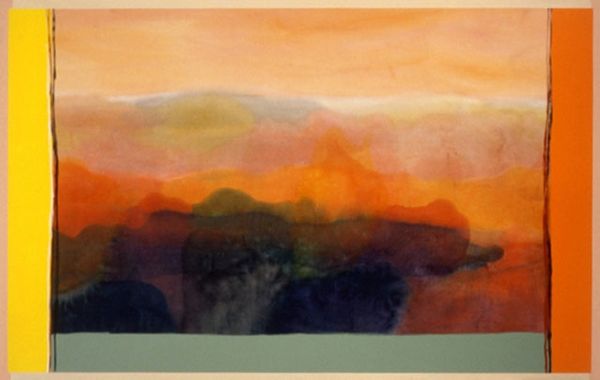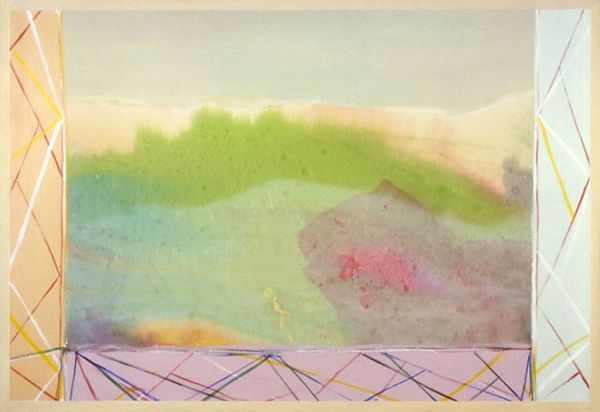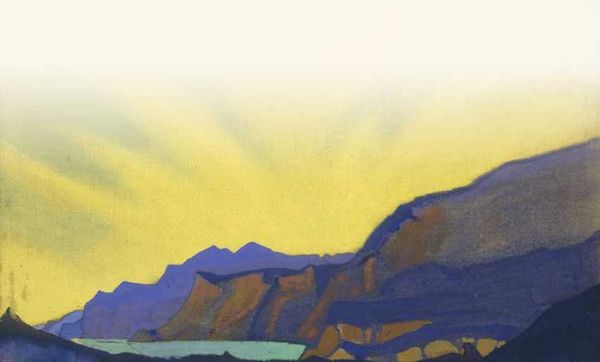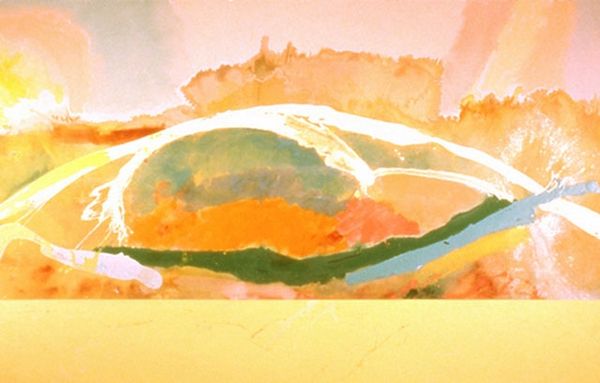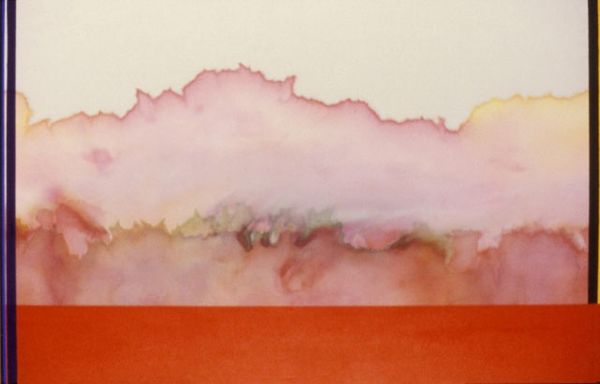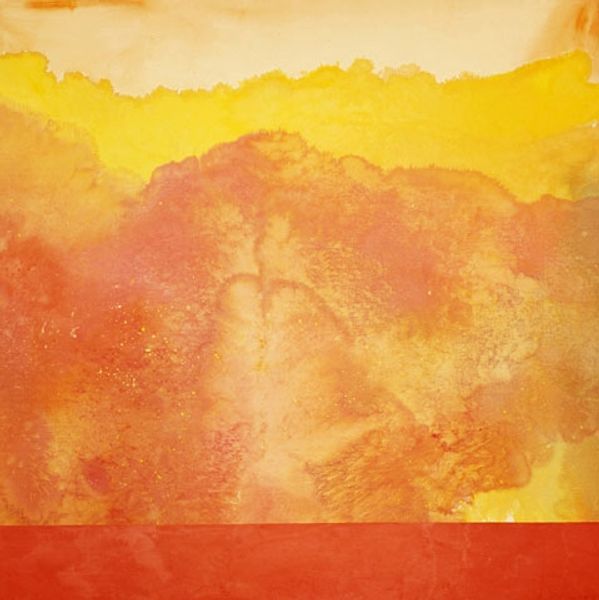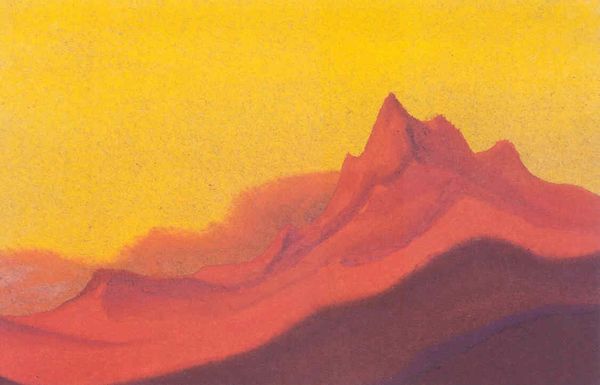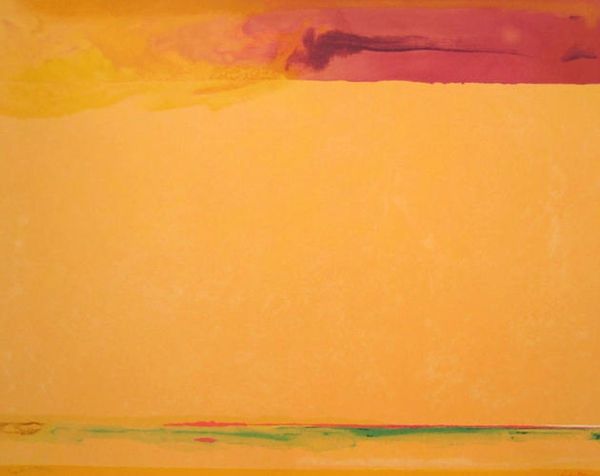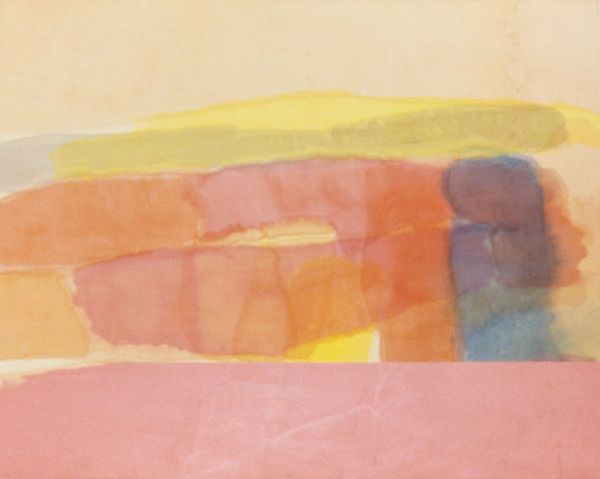
Copyright: Ronnie Landfield,Fair Use
Curator: Ronnie Landfield's "The Yellow Bridge," painted in 1988 with acrylic on canvas, is quite arresting. What is your first reaction to the composition? Editor: It strikes me as simultaneously hopeful and confined. The hazy landscape feels expansive, but the bordering structure on either side creates a sense of constraint. Is this landscape accessible or is the viewer permanently on the outside? Curator: The canvas demonstrates Landfield’s commitment to Abstract Expressionism, though clearly updated with a post-modernist sensibility. Consider the relationship between the flat picture plane, reinforced by the "bridge," and the illusionistic depth created by the layered colors. The bridge serves to reinforce surface qualities by literally establishing a horizon line. Editor: I see your point, but it also provokes a dialogue around access. The "bridge," painted yellow like a road to prosperity, ironically obstructs any true engagement with the landscape, calling attention to inequalities in access to opportunity and even nature itself. What appears as an innocent landscape painting speaks volumes to the systemic exclusion of certain demographics from traditionally white spaces. Curator: Well, I’m intrigued by the textured color fields, reminiscent of Rothko. Look closely; the paint application suggests spontaneity, yet the carefully considered palette creates a sense of harmony. It pushes and pulls the viewer, generating dynamism from what might otherwise seem like a passive landscape. Editor: The tension in this work— between the painted natural setting and encroaching constructed constraints– feels particularly pertinent given growing economic disparity and the global climate crisis that disproportionately impacts marginalized communities. Perhaps this landscape speaks to the illusion of accessibility and beauty afforded under contemporary global capitalism. Curator: That’s a reading certainly grounded in our present anxieties. I remain fixated on Landfield’s successful integration of the "bridge" not as an access point, but as an formal barrier: it enhances the painting’s internal coherence as an object. Editor: These dialogues– formal constraints and the societal consequences of those very same aesthetic forms—are so critical when unpacking seemingly "innocent" works like Landfield's "Yellow Bridge". Curator: Absolutely, and perhaps what initially seems an expression of painterly aesthetic becomes a critical tool to probe societal access and representation.
Comments
No comments
Be the first to comment and join the conversation on the ultimate creative platform.
